Pink fairy duster (
Calliandra eriophylla)
pairs the ability to thrive in the hot, dry deserts of the U.S. with delicate, puffy pink flowers. This medium-size shrub takes center stage in spring (and occasionally in fall), when its uniquely shaped pink flowers grab the attention of passersby and hummingbirds, who flock to its flowers.
This Southwestern native can handle full sun and extreme drought conditions, although applying supplemental water will improve its appearance and frequency of flowering. It’s extremely low maintenance, needing very little pruning and no fertilizing. The foliage’s feathery appearance makes it a great choice for planting next to plants with large leaves, such as cacti and other succulents, for a great contrast in textures. Although you can plant pink fairy duster anytime from fall through spring, planting in fall gives it time to establish so you can enjoy its pink blooms in spring.
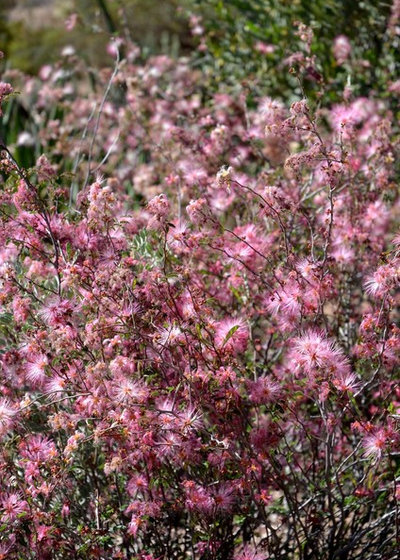
Noelle Johnson Landscape Consulting
Botanical name: Calliandra eriophyllaCommon name: Pink fairy duster
Origin: Native to the deserts of southeastern California, southern Arizona, New Mexico and western areas of Texas; also grows in northern Mexico
Where it will grow: Hardy to 10 degrees Fahrenheit (USDA zone 8; find your zone)
Water requirement: Able to survive on natural rainfall once established, but its appearance and flowering are improved when it’s watered deeply twice a month in summer and once a month in spring and fall
Light requirement: Full sun is best, but it can tolerate light shade.
Mature size: 3 feet tall and 4 feet wide
Benefits and tolerances: Drought tolerant; attracts hummingbirds
When to plant: Fall through spring
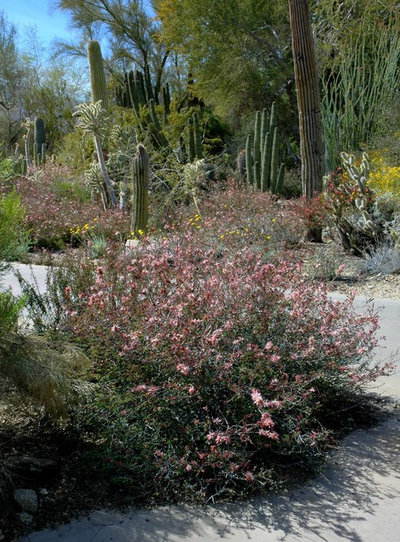
Noelle Johnson Landscape Consulting
Distinguishing traits. The airy foliage of pink fairy duster is made up of tiny compound leaves, which are medium green. The leaves will drop during times of extreme drought or cold, and will regrow in response to warmer temperatures, water or both.
Shown: Pink fairy duster at The Living Desert in Palm Desert, California

Noelle Johnson Landscape Consulting
The flowers of pink fairy duster consist of stamen clusters that range from creamy white to dark pink. During the spring the shrubs are awash in pink flowers. Smaller flushes of flowering can occur in summer or fall in response to rainfall or supplemental water.

Noelle Johnson Landscape Consulting
Small seedpods are produced after the shrub flowers. They open once they’ve dried, releasing seeds, which are a food source for native wildlife.
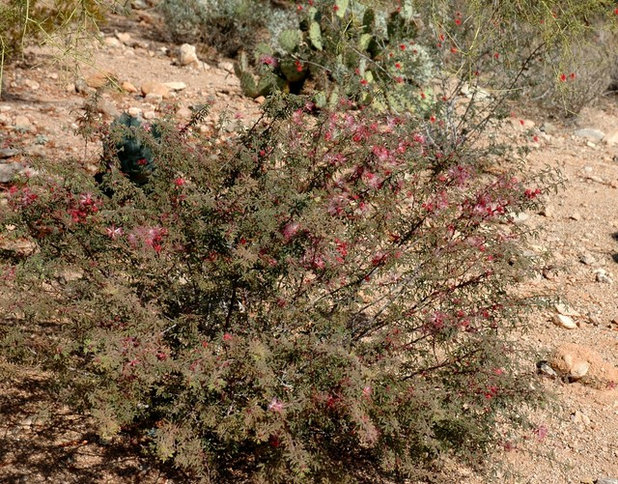
Noelle Johnson Landscape Consulting
Pink fairy duster’s size is directly related to the amount of water it receives. Plants that rely on natural rainfall are generally smaller, reaching 2 feet tall and wide, while those grown in a landscape that receives supplemental water can grow larger, up to 3 feet tall and 4 feet wide.
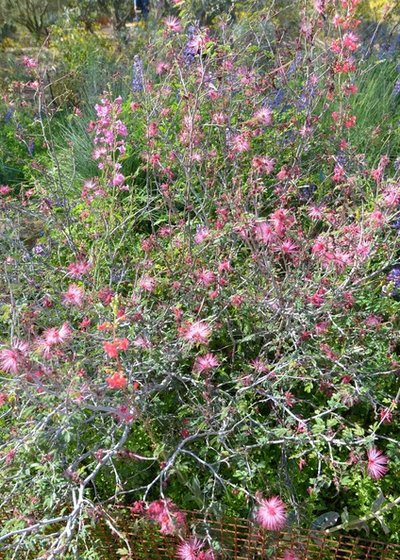
Noelle Johnson Landscape Consulting
How to use it. Pink fairy duster is an invaluable shrub in a desert landscape with a natural theme, where its airy foliage and informal shape can be appreciated. Need a medium-size, informal hedge? Try pink fairy duster. In addition to being an informal hedge, this native desert shrub can also mark a property line or line a walkway. Use it to soften the appearance of large boulders or to anchor a wildflower garden, where its pink flowers will join in with the springtime blooms.
Shown: Pink fairy duster planted alongside wildflowers at the Desert Botanical Garden in Phoenix

Noelle Johnson Landscape Consulting
Draw attention to pink fairy duster’s lacy foliage by planting it near the base of large cacti, like organ pipe cactus (
Stenocereus thurberi),
or a medium to large agave, such as
Agave murpheyi or
Agave weberi,
where the contrast in textures can be appreciated.
Other flowering companions include blackfoot daisy (
Melampodium leucanthum), brittlebush (
Encelia farinosa), desert marigold (
Baileya multiradiata) and firecracker penstemon (
Penstemon eatonii).
Shown: Pink fairy duster planted near the base of a organ pipe cactus
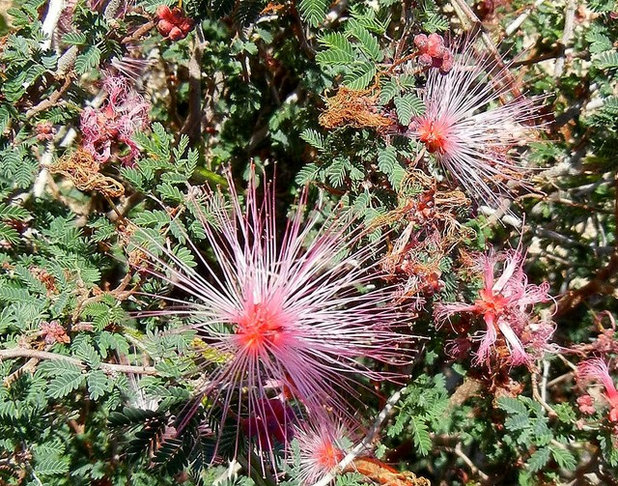
Noelle Johnson Landscape Consulting
Planting notes. Pink fairy duster is low maintenance and thrives in full, even reflected, sun. It must have well-drained soil or it will struggle to survive. No soil amendments are needed except for those needed to loosen heavy soils.





